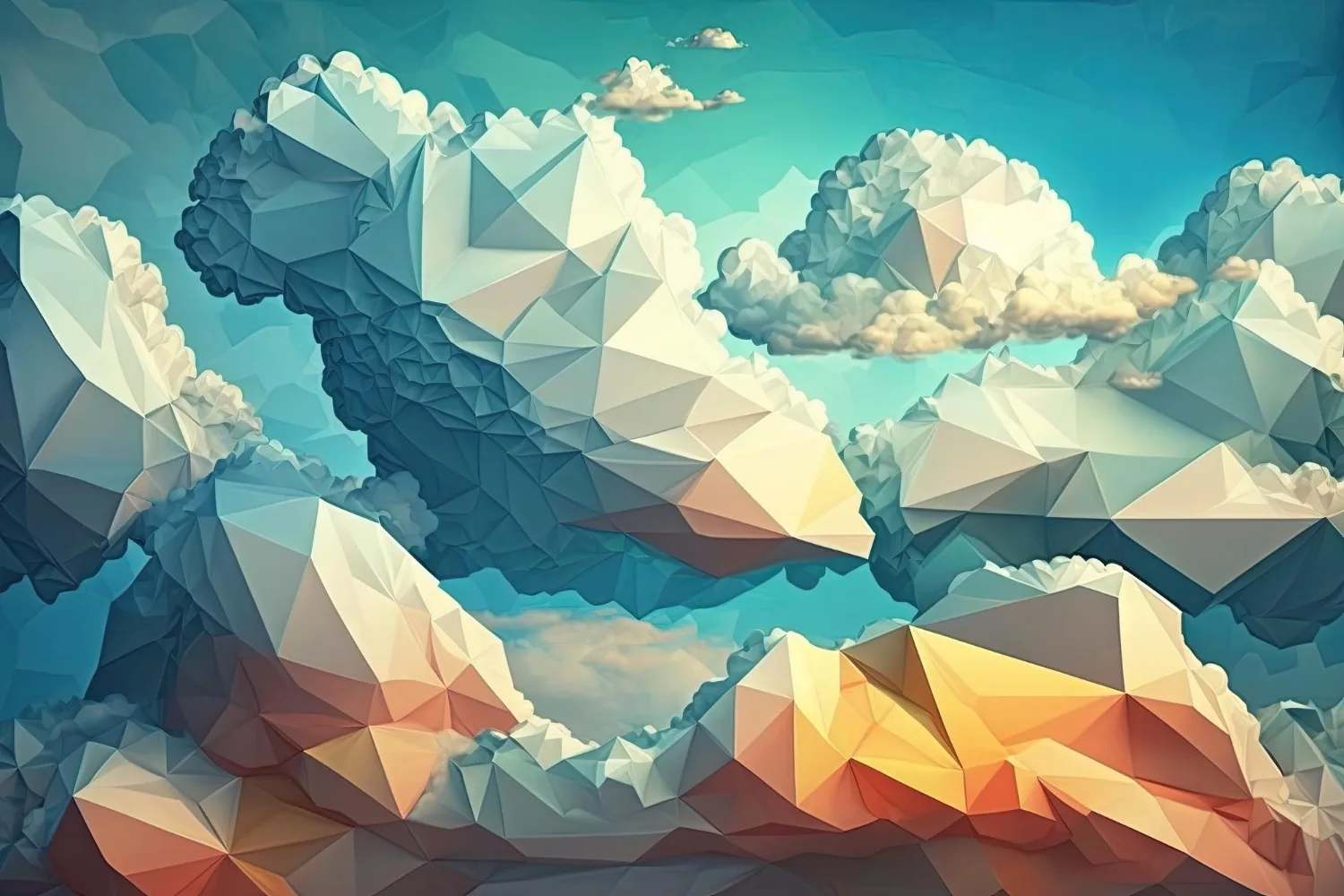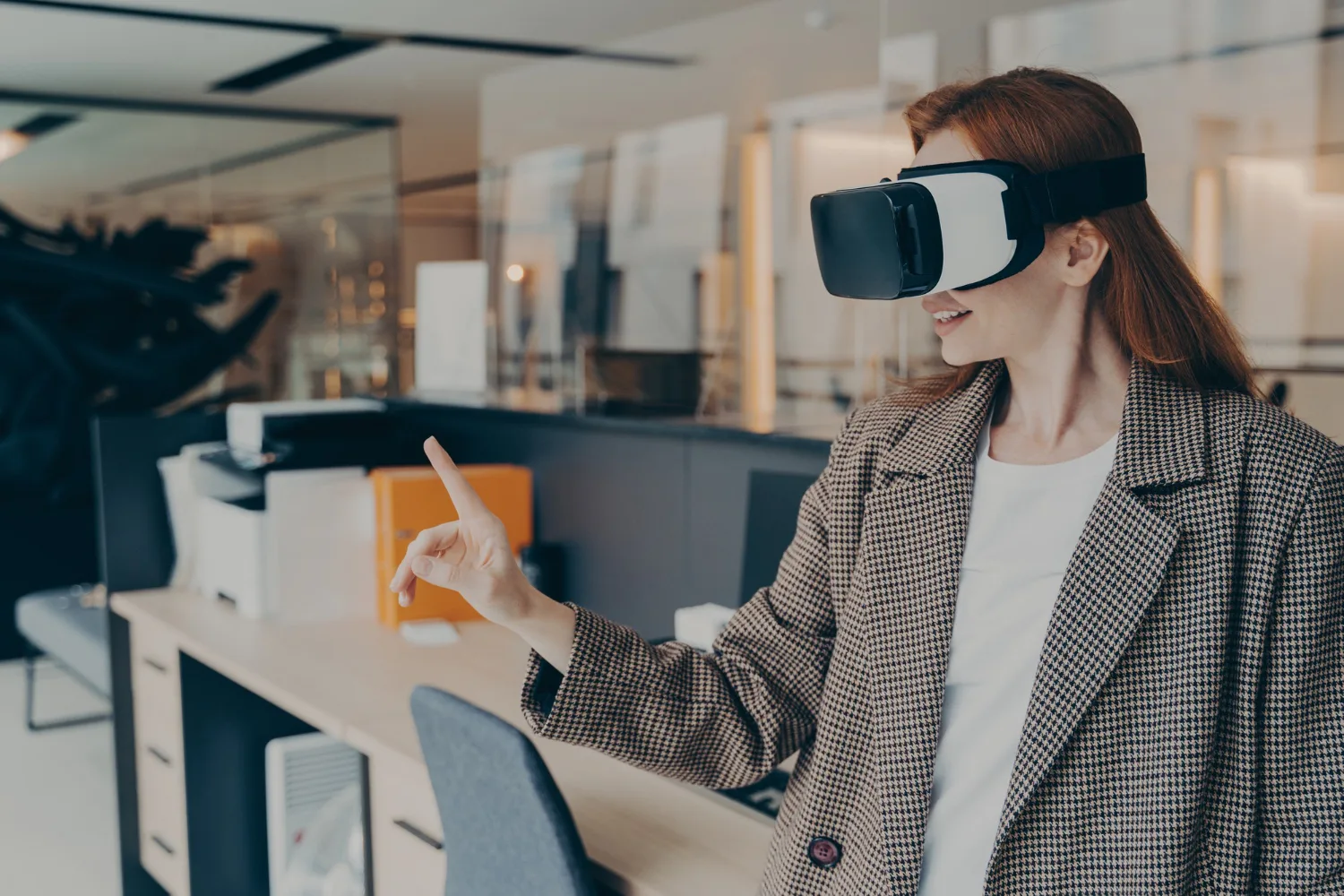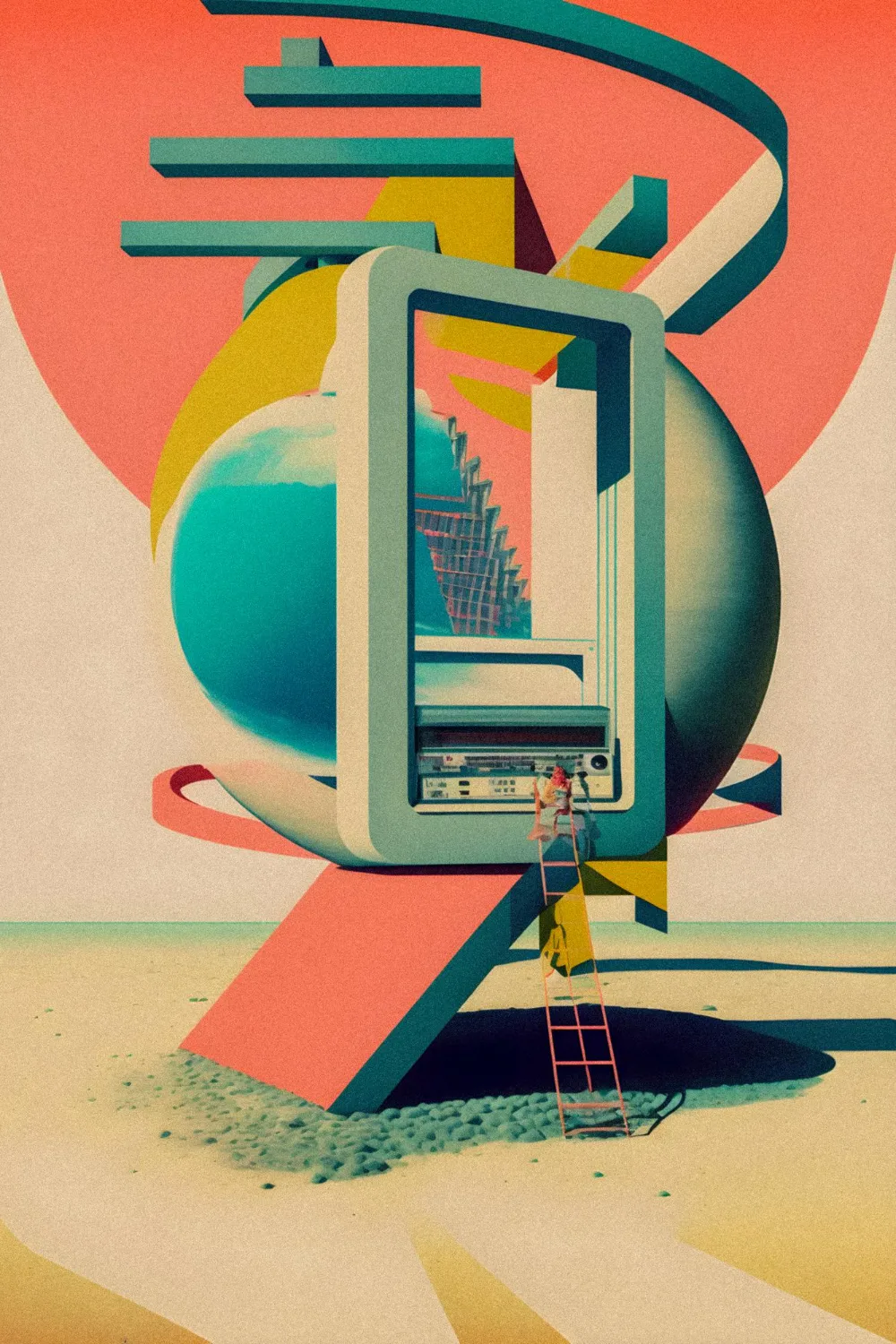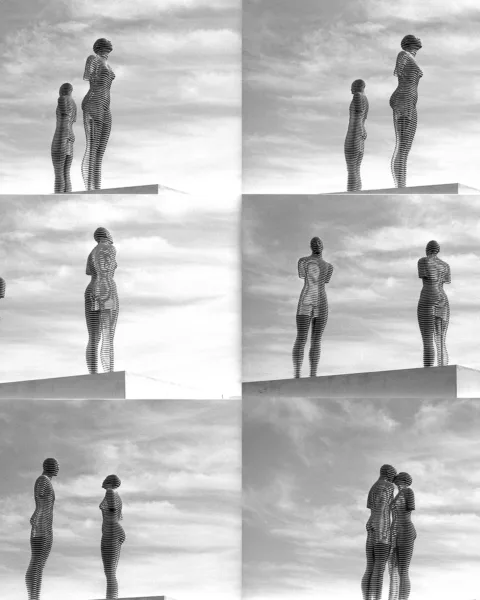The rapid evolution of technology in the 21st century has had a profound impact on various aspects of society, and the art world is no exception. As artists continuously explore new mediums and techniques, the lines between traditional and digital art forms have become increasingly blurred. This article aims to investigate how technological advancements, such as digital art, 3D printing, virtual reality (VR), and augmented reality (AR) have transformed the way we create, engage with, and consume art.
Digital art has revolutionized the creative process, providing artists with an ever-expanding array of tools and platforms to express themselves. The emergence of software programs like Adobe Photoshop, Illustrator, and Procreate has enabled artists to create intricate, detailed works with unprecedented ease and precision. Furthermore, these digital mediums have democratized the art world, making it accessible to a larger, more diverse audience.
As the boundaries of artistic expression expand, the art world is confronted with new challenges and opportunities. The integration of 3D printing, VR, and AR technologies has ushered in a new era of immersive, interactive experiences that challenge conventional notions of what constitutes art. This article will delve into these various technological advancements and their implications for the future of artistic expression, as well as the ways in which they have altered our engagement with and consumption of art.
Digital Art: A New Frontier in Creativity
The emergence of digital art has been a game-changer in the world of creative expression. As artists adapt to digital tools and techniques, they can experiment with new styles, textures, and colors that would be difficult, if not impossible, to achieve using traditional methods. The versatility of digital mediums allows for the blending of various artistic styles, resulting in a rich and diverse body of work that transcends conventional categorizations.

Digital art also provides opportunities for collaboration, as artists from different disciplines can work together to create multidimensional pieces that incorporate elements of graphic design, illustration, animation, and more. This fusion of artistic perspectives fosters innovation and encourages the development of new visual languages, pushing the boundaries of what is possible within the realm of art.
Moreover, the digital format allows for the instantaneous dissemination of artwork, making it accessible to audiences worldwide. The rise of social media platforms and online galleries has provided artists with a global stage on which to showcase their work, connecting them with collectors, critics, and fellow artists in ways that were once unimaginable. This unprecedented connectivity has not only accelerated the growth and evolution of the art world, but has also democratized access to art, opening up new avenues for artistic discovery and appreciation.
The Artistic Revolution of 3D Printing
3D printing has emerged as a groundbreaking technology with far-reaching implications for the art world. The ability to transform digital designs into tangible, three-dimensional objects has opened up a world of possibilities for artists, who can now create intricate sculptures, installations, and mixed-media pieces with unmatched precision and complexity. By offering a new level of control over form and material, 3D printing enables artists to push the boundaries of traditional sculpture and explore new dimensions of artistic expression.

One of the most significant advantages of 3D printing in art is the potential for customization and personalization. Artists can easily modify their designs to cater to specific tastes, create limited editions or unique pieces, and even incorporate the individual preferences of collectors or patrons. This flexibility not only broadens the creative possibilities for artists, but also enhances the value and appeal of their work according to consumers.
Furthermore, 3D printing technology has the potential to revolutionize the way we preserve and restore cultural heritage. Through the use of 3D scanning and printing, damaged or lost artifacts can be replicated with incredible accuracy, ensuring that the legacy of these priceless works of art endures for future generations. The potential for 3D printing to transform the preservation and restoration of art and cultural artifacts is an exciting development that could have a profound impact on the art world and our understanding of history.
Virtual Reality: Immersing Ourselves in Art
Virtual reality (VR) technology has made significant strides recently, offering unprecedented opportunities for artists to create immersive and interactive experiences that challenge the traditional boundaries of art. By transporting viewers into fully realized virtual environments, artists can invite their audience to engage with their work in a more intimate and meaningful way, fostering a deeper connection and understanding of the artistic narrative.
The use of VR in art installations and exhibitions allows for the creation of multisensory experiences that engage the viewer on various levels. From the integration of spatial audio to the incorporation of haptic feedback, VR technology enables artists to craft holistic environments that stimulate the senses and evoke powerful emotional responses. By breaking down the barriers between the viewer and the artwork, VR has the potential to redefine the way we interact with and appreciate art.

In addition, virtual reality has opened up new possibilities for art education and appreciation. Through the use of VR technology, museums, and galleries can offer virtual tours and exhibitions, granting access to their collections to individuals who may be unable to visit in person. This increased accessibility not only democratizes art education, but also fosters a global community of art enthusiasts, enriching the cultural landscape for generations to come.
Augmented Reality: Blending Art with the Real World
Augmented reality (AR) is another transformative technology that has had a profound impact on the art world. By overlaying digital images and information onto the physical environment, AR provides artists with a unique opportunity to integrate their work into the everyday lives of their audience. This fusion of art and reality offers exciting new possibilities for creative expression, as artists can design pieces that interact with and respond to the viewer’s surroundings.
One notable application of AR in art is the creation of site-specific installations that blend seamlessly with their environment. Artists can use AR technology to create virtual sculptures, murals, and other artworks that are only visible through smartphones or AR headsets, allowing viewers to discover and engage with art in unexpected places. This innovative approach to public art can transform urban spaces and challenge our perceptions of the relationship between art and the world around us.
Another fascinating aspect of augmented reality in art is the potential for interactive storytelling. By incorporating AR elements into their work, artists can craft immersive narratives that unfold as viewers explore the physical space around them. This interactive approach to storytelling not only captivates the audience, but also encourages them to actively engage with the artwork and the underlying themes, fostering a deeper connection and understanding of the artist’s vision.
The Future of Art in a Digital World
As technology continues to advance at an unprecedented pace, the art world will undoubtedly continue to evolve and adapt. The integration of digital tools and techniques has already significantly altered the landscape of artistic expression, and as technologies like 3D printing, VR, and AR become increasingly sophisticated, the possibilities for innovation are virtually limitless.
One emerging trend in the art world is the rise of blockchain technology and the creation of digital art marketplaces. Blockchain-based platforms, such as NFT marketplaces, provide artists with new ways to authenticate, sell, and trade their digital works, offering an alternative to traditional art markets. This development not only has the potential to disrupt the art world’s economic structures, but also encourages the growth and diversification of the digital art community.
In conclusion, the impact of technology on the art world has been nothing short of transformative. As artists continue to embrace and experiment with new tools and mediums, the boundaries of artistic expression will continue to expand, fostering innovation, and challenging our understanding of what art can be. The future of art in the digital age is an exciting and dynamic frontier, with the potential to reshape not only the art world, but also our relationship with creativity and self-expression.
The Intersection of Artificial Intelligence and Art
Artificial intelligence (AI) has made significant strides recently, and its applications within the art world are growing rapidly. From generating digital paintings to curating exhibitions, AI is transforming the way artists create and present their work, offering new possibilities for collaboration between humans and machines.
One intriguing application of AI in art is the development of algorithms capable of generating original artwork. Machine learning and neural networks can be trained to recognize and replicate artistic styles, resulting in AI-generated paintings that blend the techniques and aesthetics of various artists. This raises intriguing questions about the nature of creativity and the role of human input in the artistic process, challenging traditional notions of authorship and authenticity.
In addition to generating artwork, AI has the potential to revolutionize the way art is curated and exhibited. By analyzing data on visitor behavior and preferences, AI algorithms can help museums and galleries create more engaging and personalized experiences, tailoring exhibition content and layout to cater to the interests of their audience. This data-driven approach to curation has the potential to transform the way we interact with and appreciate art, offering new insights into the relationship between art and its audience.
Art and Technology: Ethical Considerations
As the art world embraces new technologies, it is important to consider the ethical implications of these advancements. Issues such as privacy, data security, and the potential for misuse or abuse of technology must be carefully considered, ensuring that the benefits of technological progress are not overshadowed by potential risks.
For example, the use of AI-generated artwork raises questions about intellectual property and the ownership of creative output. If an AI algorithm generates an original piece of art, who should be credited as the artist, and who should hold the copyright to the work? These complex legal and ethical questions will need to be addressed as AI becomes more integrated into the art world.
Moreover, as AR and VR technologies become more prevalent, concerns about privacy and the potential for surveillance may arise. Artists and institutions must be mindful of the ethical implications of their work and ensure that the use of these technologies is transparent and respectful of user privacy.
In conclusion, the impact of technology on the art world is multifaceted and complex, offering both exciting opportunities and challenges. By carefully considering the ethical implications of these advancements, artists, institutions, and audiences can navigate the rapidly evolving landscape of art and technology while embracing the endless possibilities for creative expression and innovation.
Democratizing Art through Technology
The growing influence of technology in the art world has led to a democratization of artistic expression, providing greater access to creative tools and platforms for both artists and audiences. This increased accessibility has the potential to foster greater diversity and inclusion within the art community, breaking down barriers and encouraging participation from individuals who may have previously felt excluded or marginalized.
For example, the advent of affordable digital art software and online tutorials has made it easier than ever for aspiring artists to learn new skills and techniques without the need for formal education or expensive materials. This democratization of artistic tools has opened up the world of art to a broader audience, empowering individuals from all walks of life to explore their creative potential.
Similarly, the rise of online galleries, social media platforms, and digital marketplaces has provided artists with new opportunities to showcase and sell their work, bypassing traditional gatekeepers such as galleries and art dealers. This increased visibility and access to global audiences has the potential to level the playing field for artists, fostering greater diversity and representation within the art world.
The Environmental Impact of Art and Technology
As the art world continues to embrace new technologies, it is important to consider the environmental implications of these advancements. The production and consumption of digital art, for example, may have a lower carbon footprint than traditional forms of art, such as painting and sculpture, which often rely on the use of toxic materials and energy-intensive processes.

However, the increased reliance on electronic devices and digital platforms also raises concerns about e-waste and the environmental impact of data storage and transmission. As a result, artists and institutions must strive to find sustainable solutions that minimize the ecological footprint of their work while continuing to push the boundaries of artistic expression.
The Role of Art Education in the Digital Age
As technology continues to reshape the art world, it is imperative for art education to adapt and evolve to prepare the next generation of artists for the challenges and opportunities that lie ahead. In an increasingly digital landscape, art educators must integrate technology into their curriculum, ensuring that students are proficient in both traditional and digital techniques.
This fusion of art and technology in education can foster innovation and creativity, equipping students with the skills necessary to navigate the rapidly evolving art world. By incorporating digital tools and platforms into their teaching, educators can expose students to a diverse range of artistic styles and mediums, inspiring experimentation and collaboration among students.
Moreover, the integration of technology into art education has the potential to expand access to learning opportunities for students from underrepresented or marginalized communities. Online courses, virtual workshops, and digital resources can provide a more inclusive and accessible art education experience, breaking down barriers and promoting greater diversity within the art world.
As a result of the dynamic relationship between art and technology, the art world has been redefined, pushing the boundaries of artistic expression, expanding access to creative tools, and transforming the ways we engage with and consume. By striking a balance between innovation and responsibility, the art world can continue to thrive in the digital age, enriching our lives and offering new insights into the human experience.
Looking ahead, the future of art in the digital age is both exciting and uncertain, with the potential to reshape not only the art world but also our understanding of creativity and self-expression. As artists, institutions, and audiences adapt to these changes, it is essential to foster an inclusive and diverse art community that embraces the transformative power of technology while remaining grounded in the core principles of artistic expression. Keeping tradition and innovation in dialogue allows the art world to evolve and flourish, inspiring new generations of artists and audiences to explore the infinite possibilities of art in a rapidly changing world.





